CASABLANCA
Hassan II Mosque
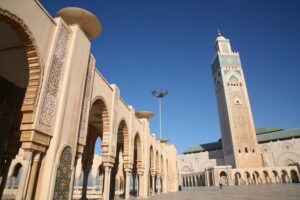
Medina
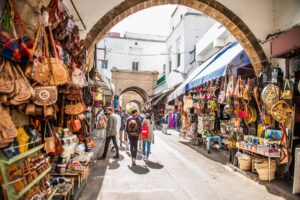
Mohammed V
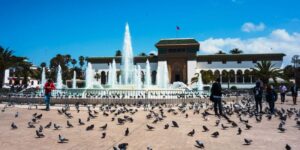
It was built under the French protectorate by architect Joseph Marrast, and it represents an example of the architecture of the 1920s, mingling tradition and modernity.
The square is considered the administrative center of the city, as it brings together plenty of buildings erected after the First World War including the Consulate of France, the courthouse, the prefecture, the central post office, and the bank of Morocco. Casablanca’s main square, Place Mohammed V is surrounded by attractive buildings and palm trees. The paved square is the administrative heart of the city.
Sacre Coeur Cathedral
 In the heart of Casablanca, a surprising sight is the huge Cathedral Sacre-Coeur or the Casablanca Cathedral. All at the same time its unique architecture and its surroundings seem both out of place and in harmony with the disused church of Casablanca Cathedral.
In the heart of Casablanca, a surprising sight is the huge Cathedral Sacre-Coeur or the Casablanca Cathedral. All at the same time its unique architecture and its surroundings seem both out of place and in harmony with the disused church of Casablanca Cathedral.
Mahkama Du Pacha
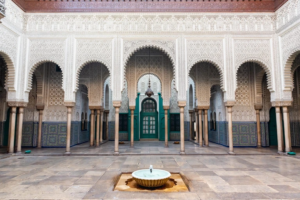
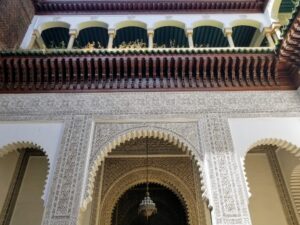
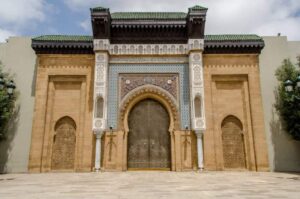 Royal Palace of Casablanca
Royal Palace of Casablanca
The tiled and carved entrance gates of the Royal Palace of Casablanca set the stage for this grand royal abode, which features elaborate waterworks surrounded by orange groves. A popular tourist attraction despite restricted access, this principal residence of the King of Morocco has a facade of carved arches covered with blue glazed tiles. You may get a chance to peek through its ornate gates during one of the ceremonial receptions taking place here, but be aware that the place is guarded by uniformed royal guards. There is a huge open square at the front, as well as a number of fountains, where you can stop and view the palace’s grand exterior.
Museum of Moroccan Judaism
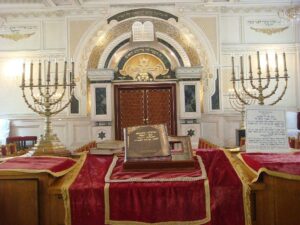
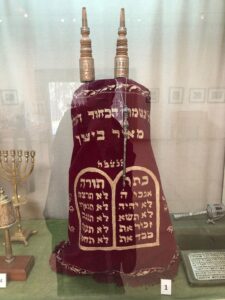
The Museum of Moroccan Judaism tells the story of Morocco’s previously large Jewish population. It’s an interesting place to learn more about the nation’s Jewish heritage and history, as well as about Jewish culture in general. What makes the museum exceptional, however, is the fact that it is the only museum dedicated to Judaism in the entire Arab world.
The History
Built in 1948, the elegant villa that now houses the museum was once a Jewish orphanage, built by Mrs. Celia Bengio in memory of her late husband Murdock Bengio.
Its function as an orphanage for the protection of Jewish children continued until the late 1970s, when vast amounts of the Moroccan Jewish community migrated to Israel, France, Canada, and the United States.
Amongst Arabic-speaking countries, it was Morocco that hosted the largest Jewish community. In the 1960s, Casablanca had more than 70,000 inhabitants of the Jewish faith.
In 1997, the same year the Museum of Jewish Art and History opened in Paris, a cultural space was created where Jews and Muslims could meet, along with this ethnographic museum which highlights the Moroccan Jewish tradition in Fez, Essaouira, and Marrakech, cities which Moroccans had come from to work in Casablanca.
The Museum Today
This museum dedicated to the Jewish culture is unique in the Islamic World. It is a private ethnographic museum, consisting of two distinct spaces:
A space reserved for temporary exhibitions
A second space, with 3 rooms, for permanent exhibitions.
The pathway through the permanent exhibitions gives visitors a front-row seat to the enhancement of the authenticity of Moroccan Judaica, as well as to the diversity of Moroccan synagogues and their interiors.
Inside the Museum
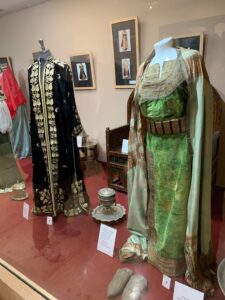 One very pleasant feature of the visit: the sweet singing birds of the adjoining gardens accompanies visitors’ discovery of beautiful pieces of Moroccan Jewish craftsmanship! Bracelets and fibulas in 19th-century silver, pendants, amulets, and ankle bracelets. One window also displays dolls dressed in Judeo-Moroccan costumes.
One very pleasant feature of the visit: the sweet singing birds of the adjoining gardens accompanies visitors’ discovery of beautiful pieces of Moroccan Jewish craftsmanship! Bracelets and fibulas in 19th-century silver, pendants, amulets, and ankle bracelets. One window also displays dolls dressed in Judeo-Moroccan costumes.
A larger section is dedicated to sacred art: megillah cases, Thoras covered with their gold thread embroidered coat, and synagogue furniture. There is also beautiful 18th-century Azemmour embroidery.
A section also exhibits tebahs from ancient synagogues or reading platforms made of carved wood where a rabbi would officiate. A beautiful set of rooms to discover in an extremely pleasant and relaxing setting.
Jewish Cemetery
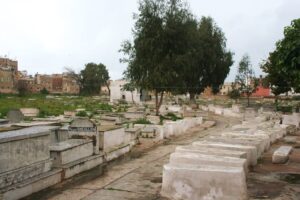
Central Market
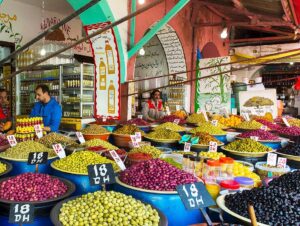
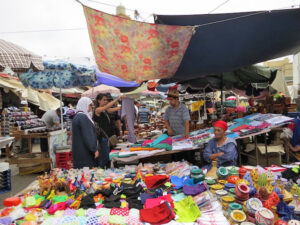
The lively Central Market is one of the best places in Casablanca to see how locals shops and to pick up an array of traditional goods and souvenirs. Colorful babouches (traditional leather slippers) and clothes hang in front of stalls. Women shop for spices and fresh produce. Cookware and home items are abundant.The Central Market was designed by Pierre Bousquet, and construction was completed in 1917, on the site of the Casablanca Fair of 1915. The Central Market was the most important marketplace in Casablanca’s European Ville Nouvelle.
The Moroccan nationalist resistance fighter Muhammed Zarqtuni bombed the Central Market on December 24, 1953, after French forces forced Sultan Muhammad VI into exile on August 20, 1953—which was Eid al-Adha.
Sindibad Park Arab League Gardens
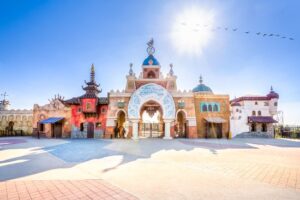 Sindibad Park is the only amusement park in Morocco. After being closed for many years, it has now reopened, offering a great place to take kids for a few hours. There are rides for smaller children and a small zoo.
Sindibad Park is the only amusement park in Morocco. After being closed for many years, it has now reopened, offering a great place to take kids for a few hours. There are rides for smaller children and a small zoo.
Arab League Gardens
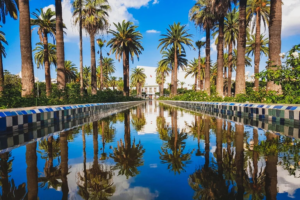
A pretty park, the Arab League Garden is a pleasant place for a stroll. Palm trees overhang the main pathway, offering plenty of welcoming shade and there are several terrace cafes where you can stop for a spot of people watching
Plage de Ain Sebaa
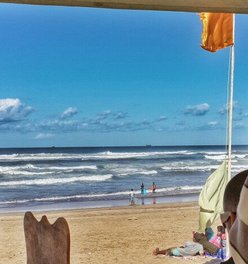
This is my FIRST STOP, spending four nights in Casablanca. Stay tuned. Onto the next city!!!

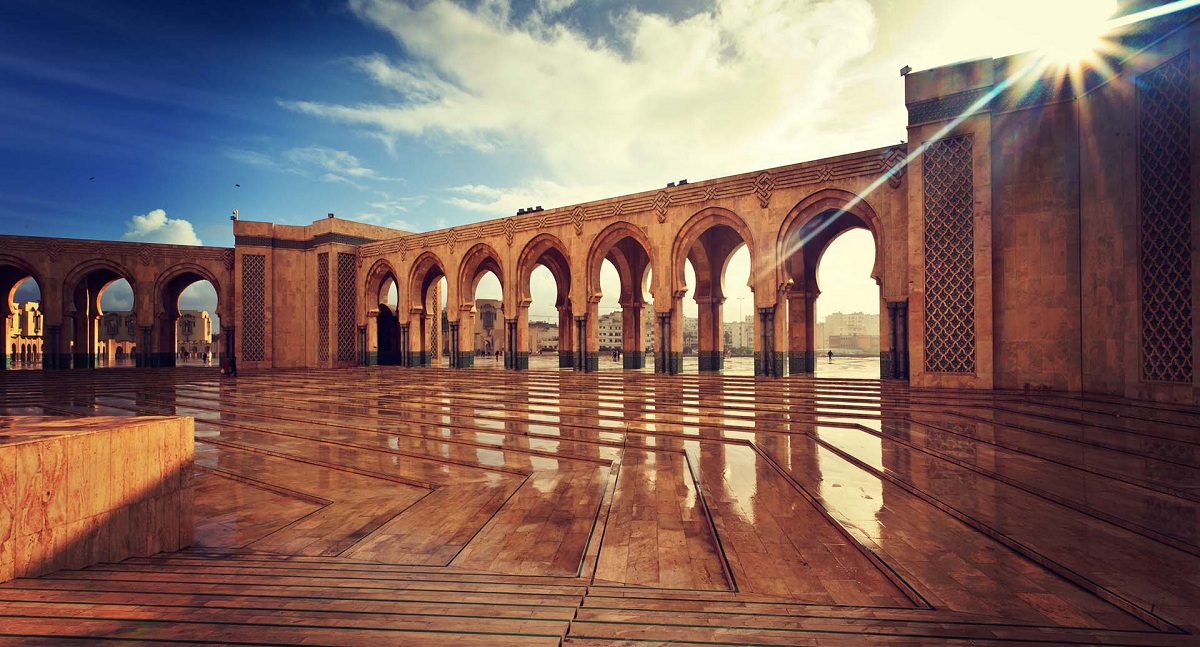
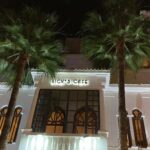
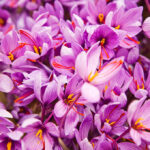
Thanks for sharing excellent informations. Your site is very cool. I am impressed by the details that you have on this site. It reveals how nicely you perceive this subject. Bookmarked this web page, will come back for more articles. You, my friend, ROCK! I found simply the information I already searched everywhere and just couldn’t come across. What a perfect site.
I am happy that you find my articles useful. I have two other websites if you are interested:https://theessenceoflife.online/498-2/ and https://theserendipityofalifewelllived.online/blog/ ENJOY!! Regards, Eleanor